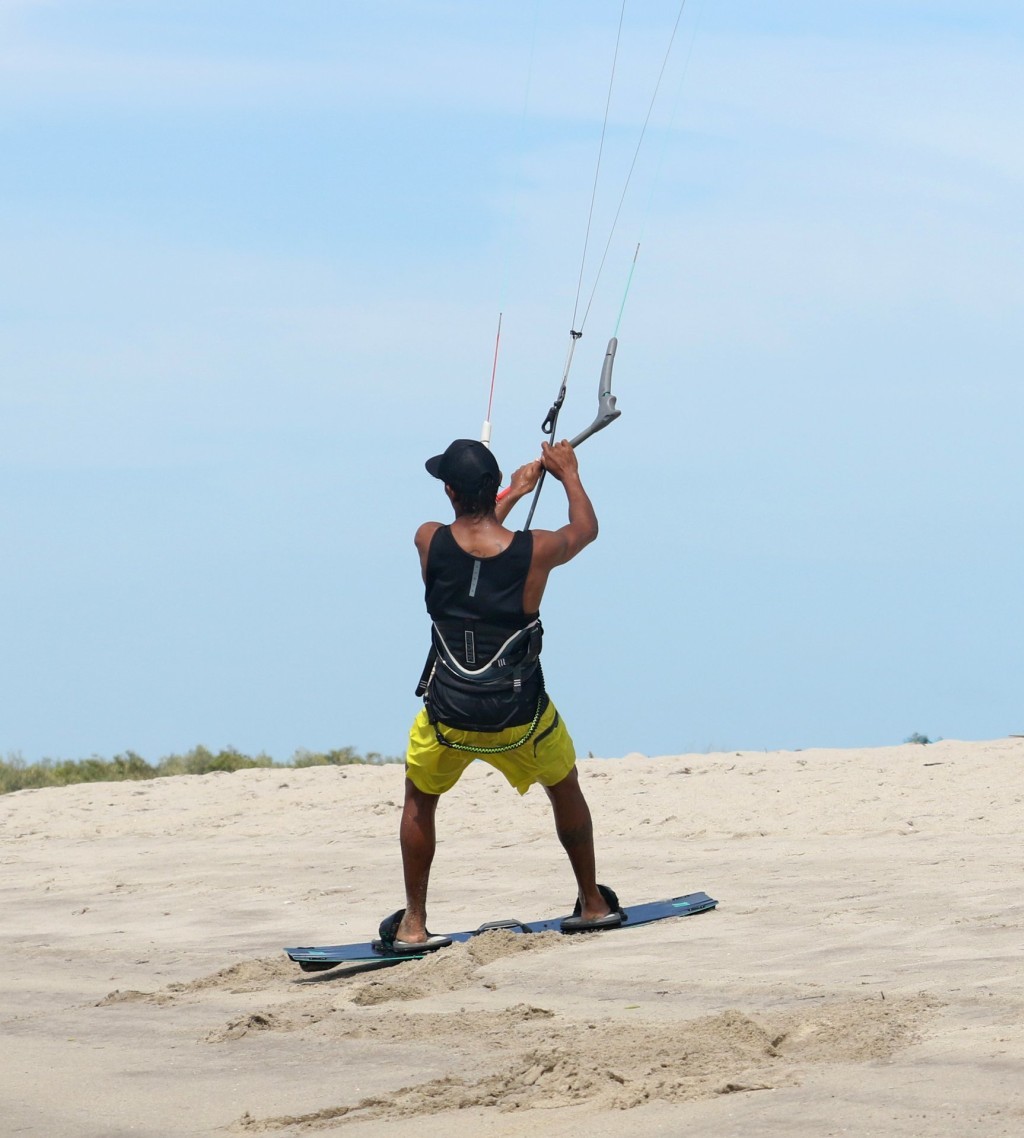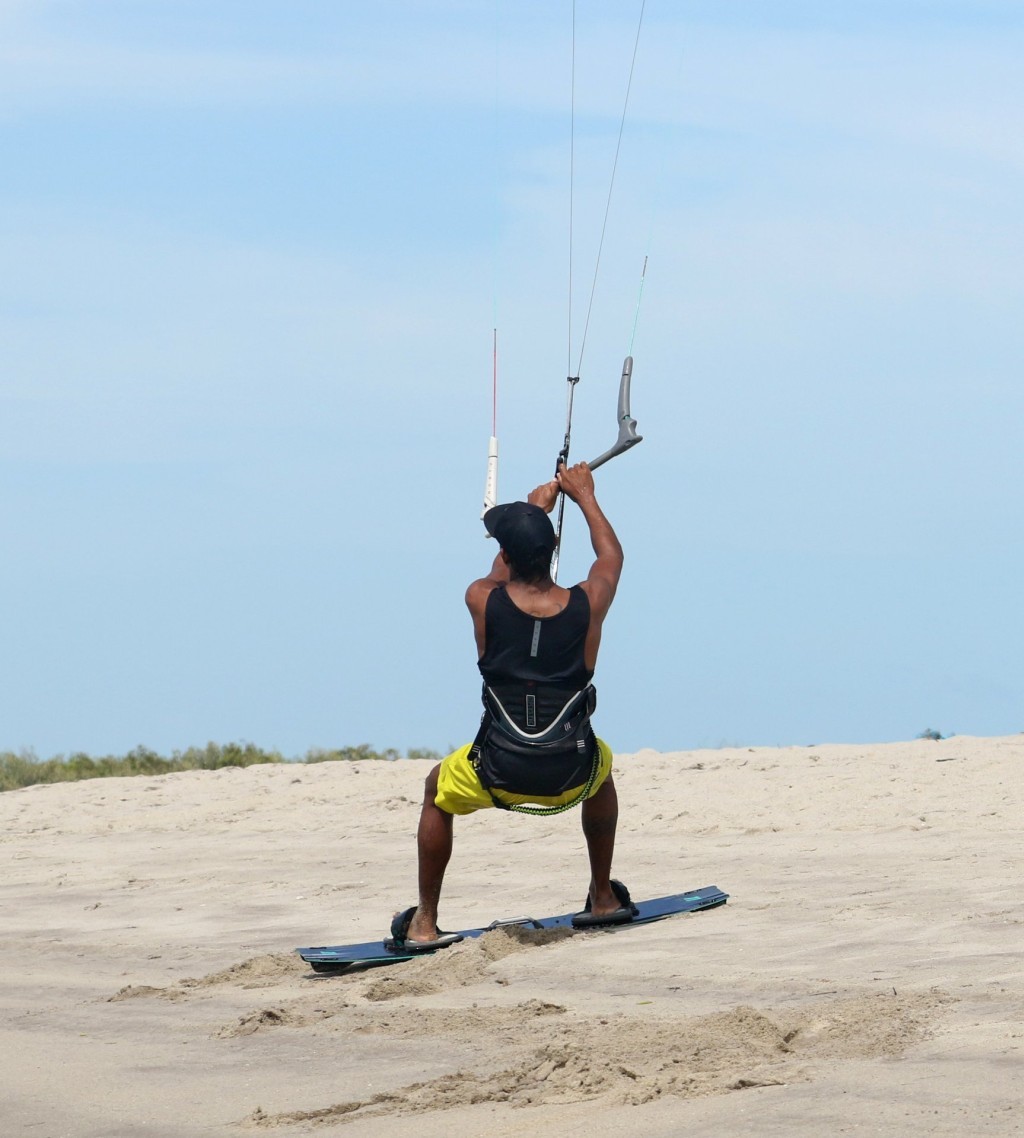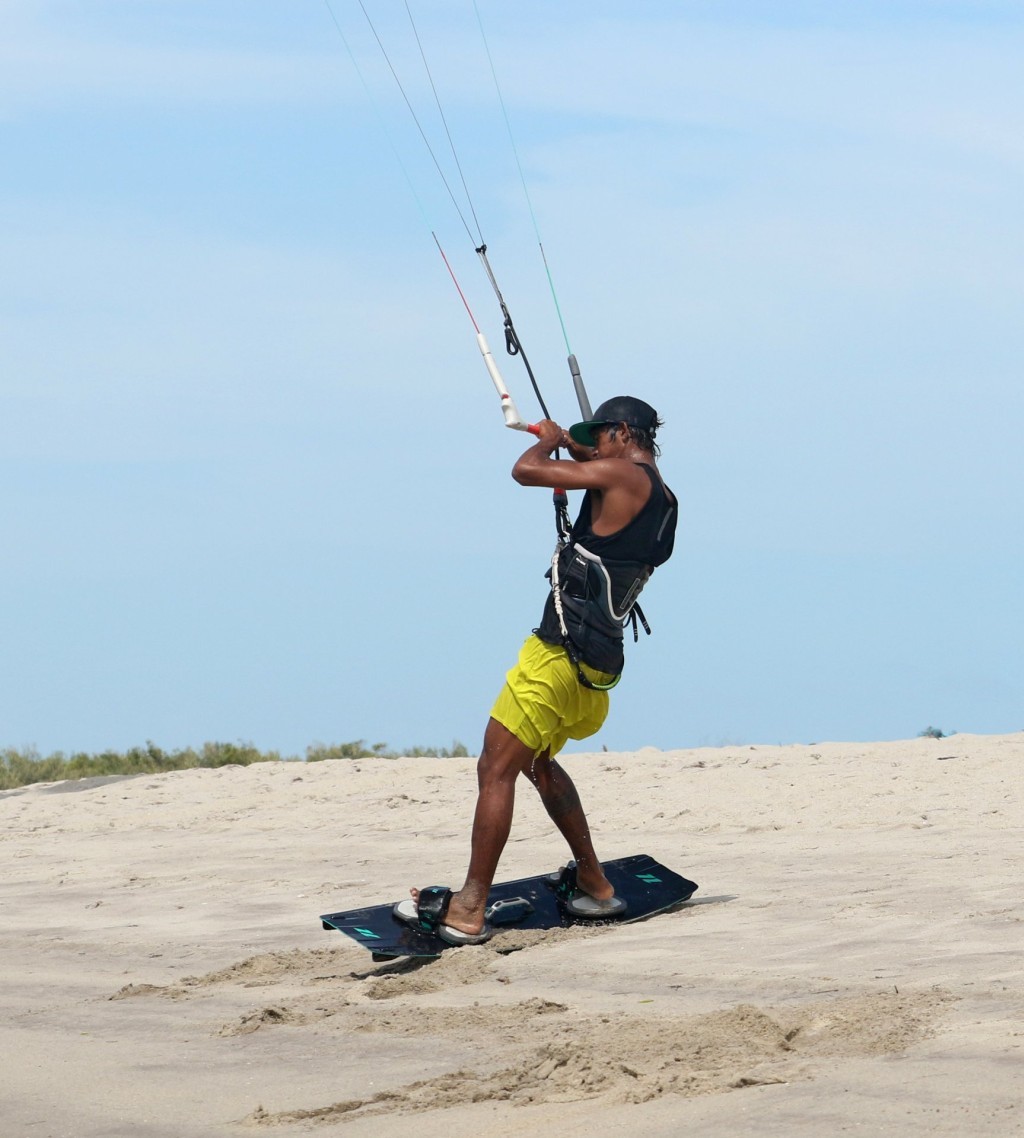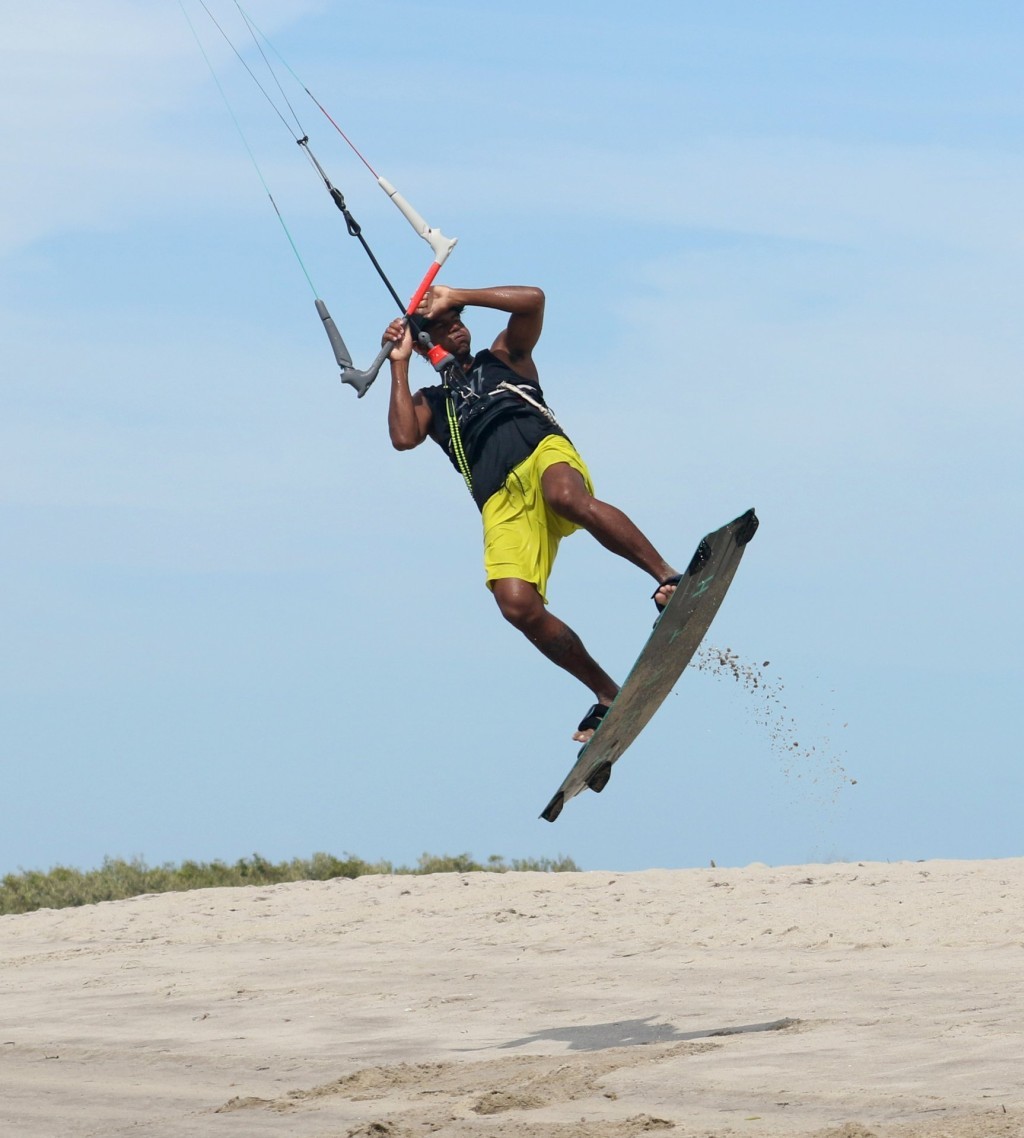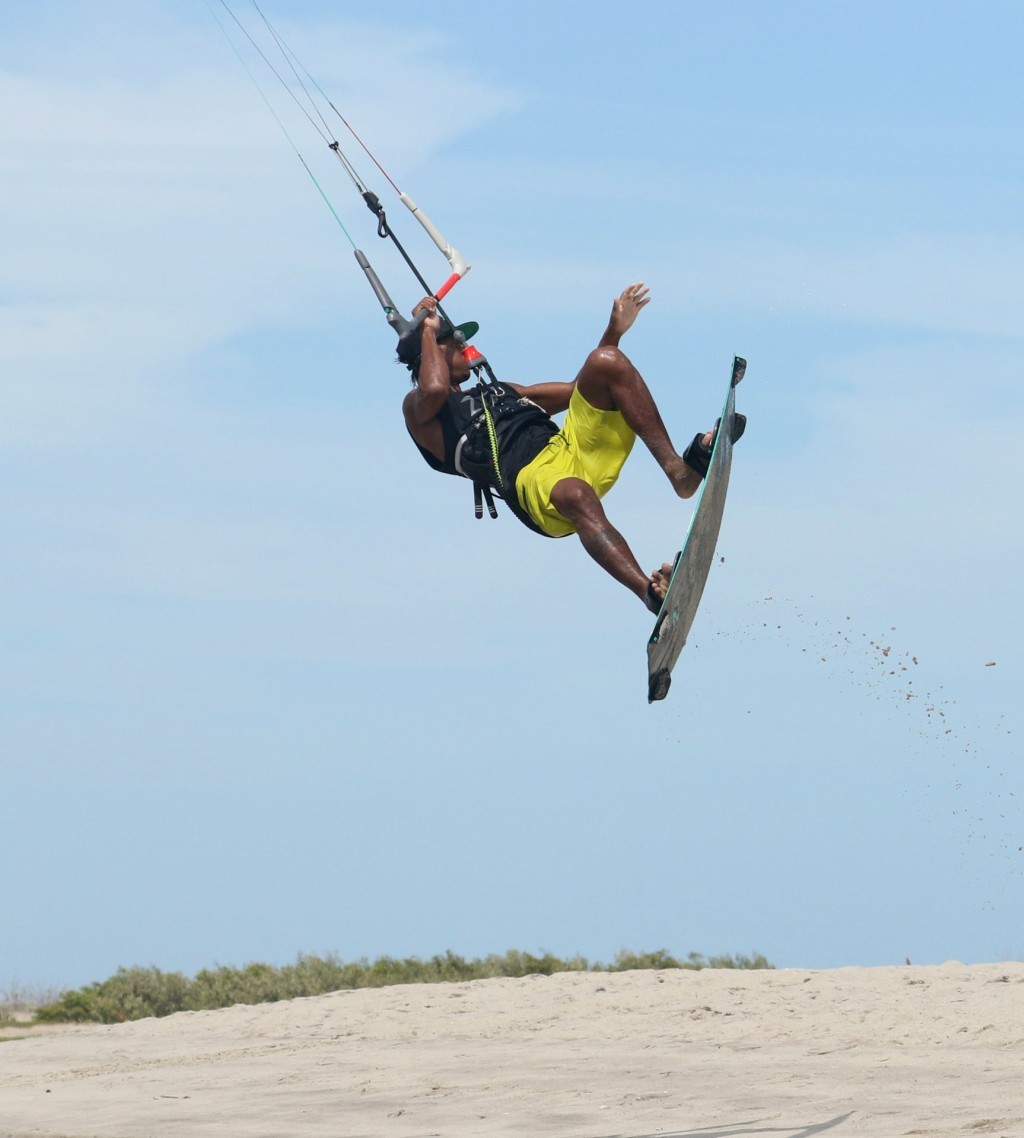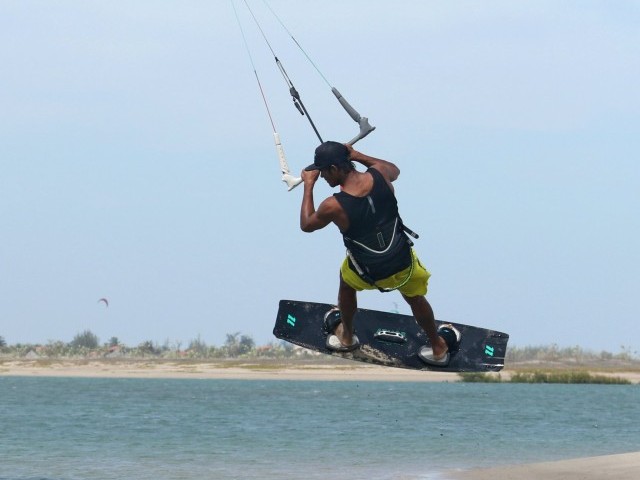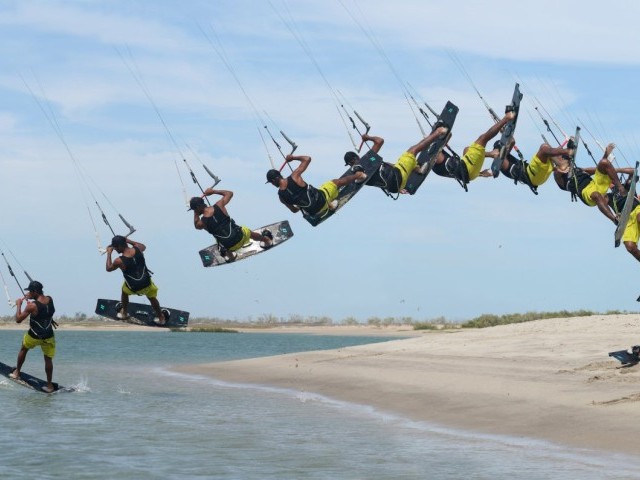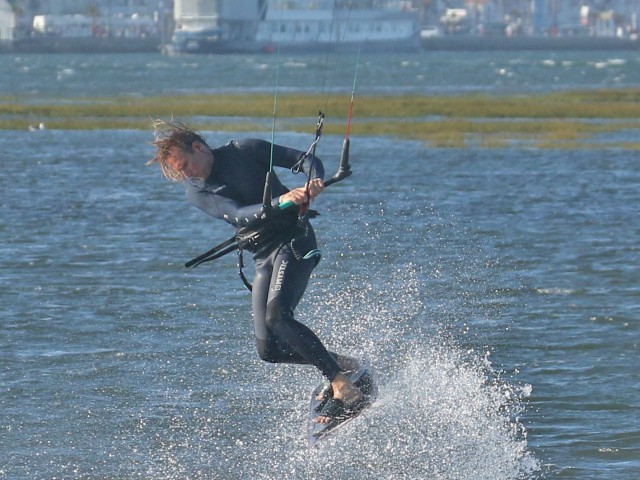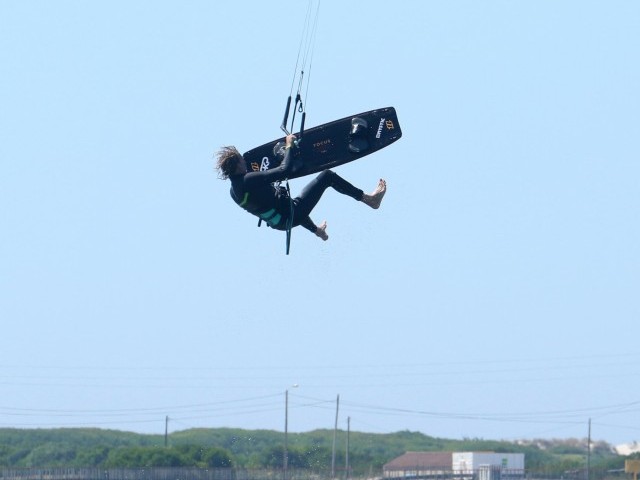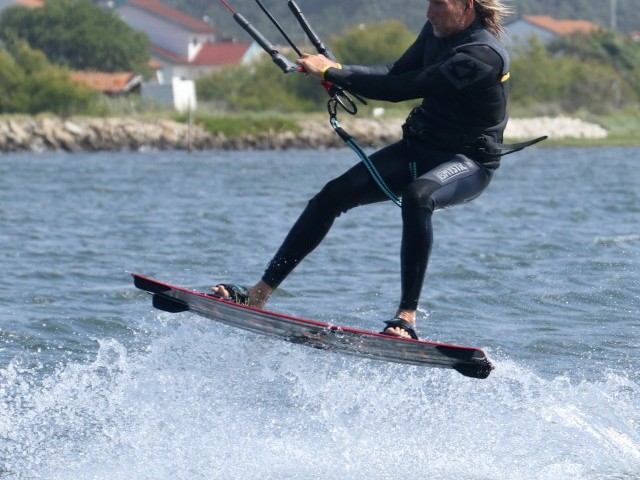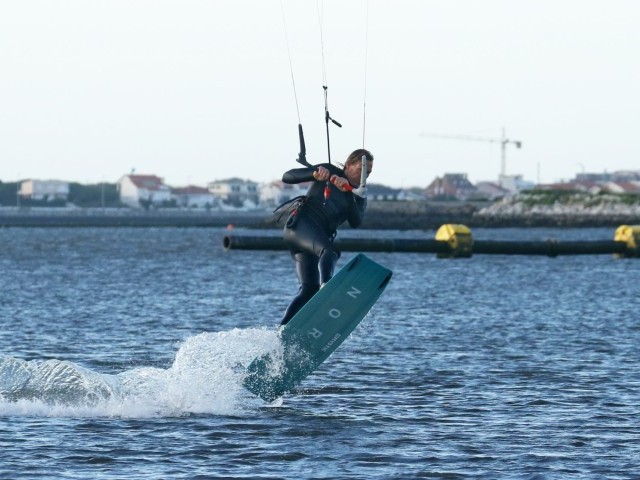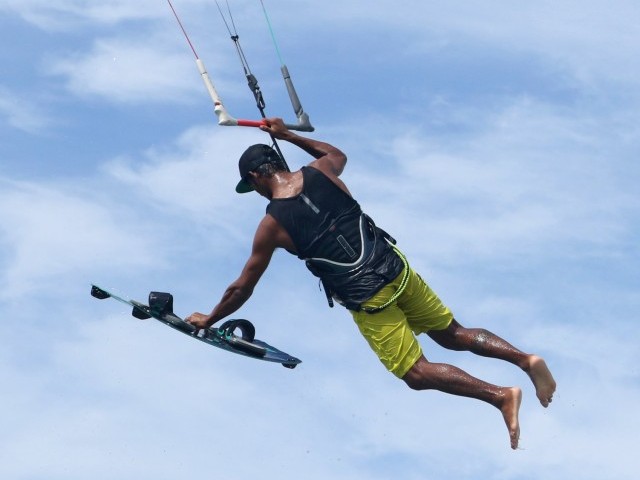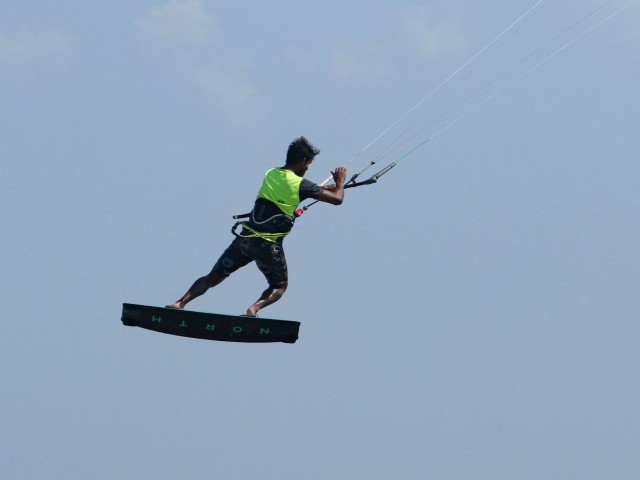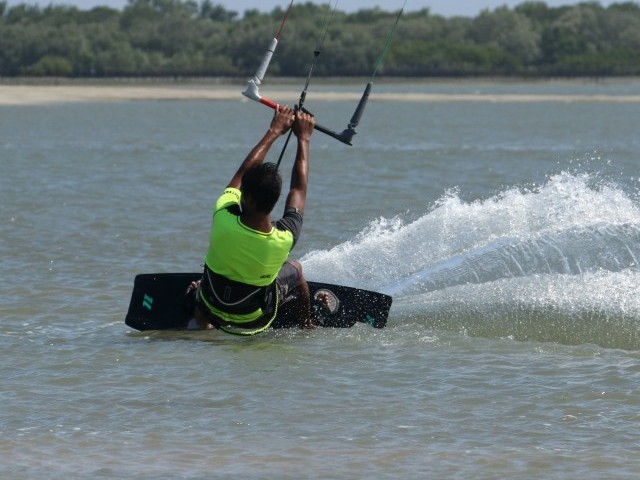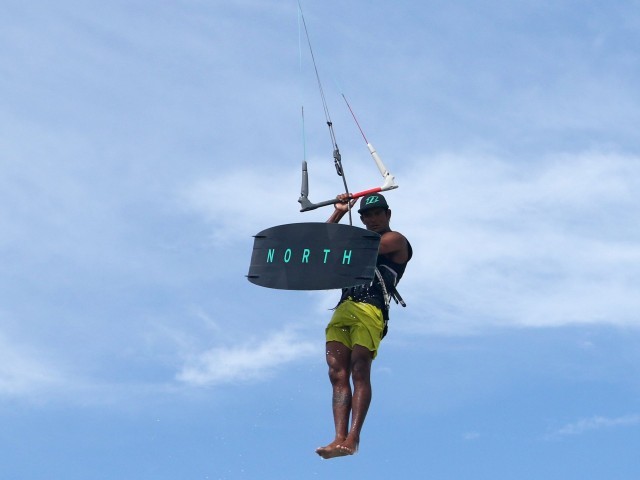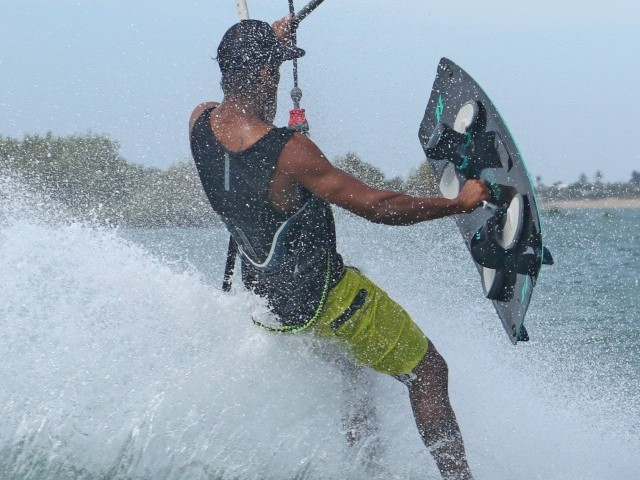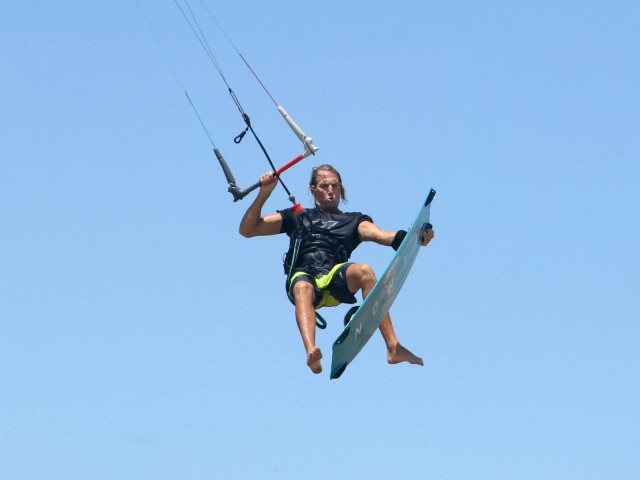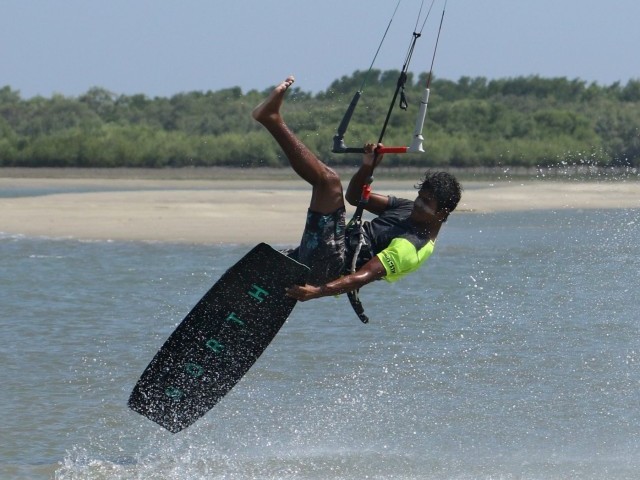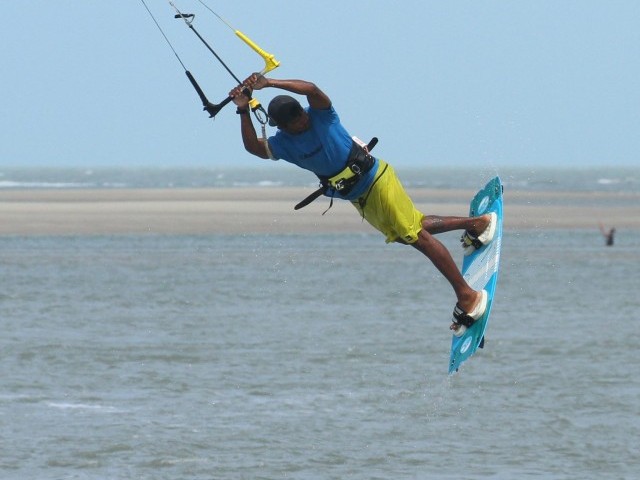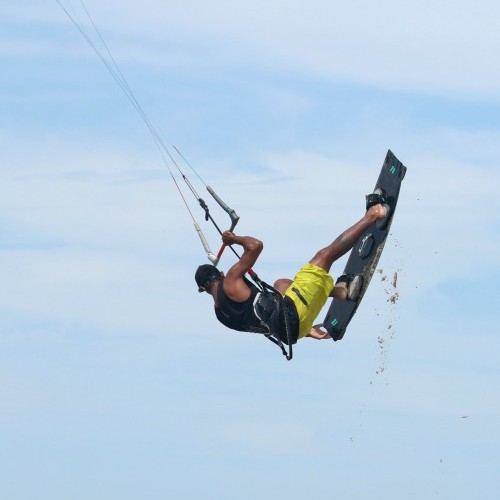
Beach Start Back Roll Grab
Technique / Advanced
Introduction
If you want to kick off your session completely mad dog, hair down, guns blazing, look at me, who’s the Daddy, then this far from subtle entry into the ocean is defo your tipple of choice. However, it is possible to underplay it as if nobody is watching, but that forced cough before lift-off, might just arouse suspicions. We’re spicing this bad boy up with a cheeky grab and tweak, and who better to call in but the maestro of style himself, Heliarde.
A few finer details that should be delivered before we get too excited. Firstly, this is a move for offshore or cross offshore spots. If you’re devilishly brave, foolish or extremely accomplished, it’s vaguely possible with cross shore. However, under no circumstances should the light bulb spark with any inkling of onshore on the menu. Secondly deep water is what makes kiting both fun and safe, a sport of aerial antics with nothing more than broken water. Few spots have the luxury of deep water right next to dry sand, and as with everything, nothing is certain. If it’s not deep enough to fail spectacularly, it’s not deep enough!
Prerequisites are rotations. Even though it’s technically a back roll, knowledge and accomplishment of the front roll will stand you in good stead due to the nature of the take off. In this instance the wind is blowing cross off, and Heliarde will be spring off to his and our left.
We’ll take this from the beginning as a little refresher before we get to the accoutrement, where you’ll be grabbing the nose of your board with your front hand.
On Your Marks Pic A.
Set up for this remains the same as any beach jump start. With your board across the wind and kite at 12 o’clock you can step into the straps. Now drift the kite back slowly behind you, in this case to just past 1 o’clock. If you pull a little on the bar you should feel some pull as the kite drops deeper into the window. Wiggle your board so that you can comfortably lean gently against this pull. Now your board is in the perfect position for the jump, probably slightly further back than dead across the wind. Heliarde, is now ready he’s holding some power in the kite and has dropped his weight slightly to counterbalance it. To make sure he’ll get enough air, he has trimmed the sweet spot away and out and feels to make sure that there is enough power for this move. Weight should be balanced equally between your feet and the kite should have some pull even at standstill.
Set Pic B.
If you’re already down with the beach jump start, you’ll be fully aware that it’s all too easy to be gentle with the kite and end up with nothing more than a damp squib. To get off the beach, and up into the air you’ll need to give the kite a good send. You also want maximum lift, with the kite moving up and over 12, so sending on the sweet spot is a must. Pull the bar in and the kite will scoot across the window, and you’ll get zero in the way of height. You need to harness this power and resist it until the appropriate time comes, so drop your weight against the kite and lean back so your heels push the edge into the sand. And as far as timing goes, it’s worth watching your kite so that you know where it is and when the moment comes. Heliarde is push-pulling the bar on the sweet-spot, watching as it rises, whilst keeping his weight back, resisting and adding tension in the lines, so that the kite turns and heads up to 12 with gusto.
Go Pic C.
To get off the beach and get your rotation going you need to be ready. Once the kite reaches 12, stamp hard off your front foot, kicking against the edge and upwind to keep tension on the lines, whilst throwing your head and shoulders towards the tail of the board, behind the bar. At the same time pull the bar in to get maximum lift and level it. This movement can feel counter intuitive as you’re exploding up whilst throwing the rotation against your intended direction of travel. Once again, if you’re on the edge of deep water with the wind blowing offshore you’ve got nothing to worry about. Here Heliarde has exploded up, adding height to the pull from the kite, whilst kicking himself towards the tail of the board, throwing his head and shoulders down and around behind the bar.
Rotate Pic D.
Bring your knees up to help continue the rotation, look over your shoulder to lead the rotation and keep the bar level and in, to stop the kite moving any further in front of you, and to make sure that it pulls you downwind and away from the beach. Once you know it’s all going to plan you can start to bring your knees up and release your front hand in preparation of the grab. Heliarde knows that he’ll make the water and feels that he’s got plenty of height and the kite is in the right place, so he’s releasing his front hand.
In Place Pic E.
Now that you’re in your comfortable place, floating and happy in the knowledge that you have time and water you can commit towards the grab. The reason we’re opting for the nose grab with the front hand is because of the take off. For the rotation you are leaning back onto your back foot before kicking off. This naturally forces the shoulders down and the nose up, so why not make the most of a good thing. As you release your hand bring your front knee up towards you and aim your hand towards the nose. To make it easier to reach, and again by good fortune what will make it look even better, extend your back leg away from you. This will push the nose up nearer. Looking at Heliarde, he’s lifting his front knee up whilst extending his back leg away and he’s looking at the nose, where he’ll grab.
Make it Count Pic F.
Get you pinkies on the nose and pull it in towards you. Once you’ve got a good grip you have the option of tweaking it by pulling in and pushing your back foot out as much as possible. At the same time, you need to continue your rotation, so look over your shoulder to get your bearings. With the kite pulling you and your front hand off the bar the only way in which you have control of your destiny is by sheeting in or out. If the kite is pulling too much sheet out, if you’re losing support sheet in. Heliarde, unsurprisingly looks rather in control.
Landing Pic G.
This part should come pretty naturally to most, although how you sent you kite will affect what happens next. If you sent it too far your kite will be at the edge of the window so you’ll have to land on an edge, whereas if it stopped at 12, you’ll need to get the front hand back on and give the kite a dive to pull you out with some power. Heliarde has opted for a bit more oomph, getting his front hand back on so he can dive the kite down for some extra pull and a softer landing. As you come down drop your legs to get the board underneath you and be ready to absorb the impact if you come down across the wind.
Top Tips
Deep water and offshore wind! ‘Nuff said.
As with all moves, get yourself accustomed to the conditions with one part before adding the next. Bang out a few beach jumps and once you’re comfortable add the rotation and finally the grab.
Line tension and sweet spot mean everything. If you don’t resist, you’ll have no height and travel, but if you replace resistance with brute force and choke the kite, you’ll gain nothing and be lucky to make the water.
Have a gander at the sequence and videos for a step by step and real time visual.
Common Problems
If you find that you’re not getting enough height on your jump. Chances are that you’ve either trimmed too much, don’t have enough power or are being too gentle with the send. That said if you’re moving the kite well but you’re not going up you might be trying to jump off your toes rather than with your heels against the edge. Make sure you drop your weight back to keep tension on the lines.
If you’re getting up and around but land unbalanced on your side, it’s because the kite has travelled across the window to the other side. The good news is that you must be sending it. Make sure though that you level the bar before exploding up. This way the kite will slow considerably and stay more above you as you rotate. Watch Heliarde again and you’ll see how he really stops the kite by levelling the bar before springing.
If you’re not rotating, it’s a sign that you’re not using your front leg and you’re going forwards with the kite rather than back and behind. As the kite moves up, get your head back around your centre line, as if ducking under the bar.
If you’re missing the grab, concentrate on extending your back leg as you bring the front knee up.
Keystones
- Set up a solid ready position
- Decent send, push-pull
- Bar out and level
- Front leg kick, head and shoulders back
- Front knee up, back leg straight
This technique article was in Issue 86 of IKSURFMAG.
Related
By Christian and Karine
Christian and Karine have been working together as a coaching team, running improver to advanced kitesurfing clinics since 2003.






